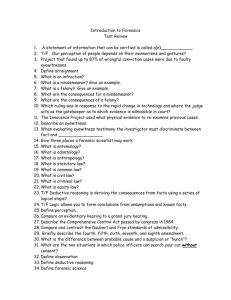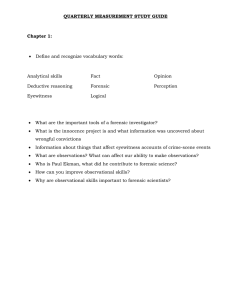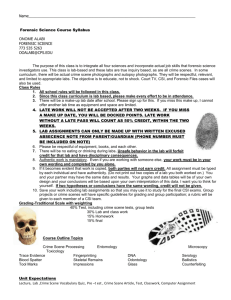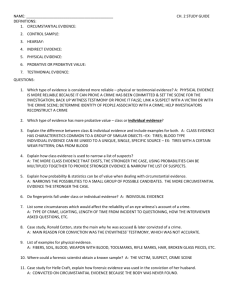Forensic Evidence Types: Direct, Physical, Class, Individual
advertisement
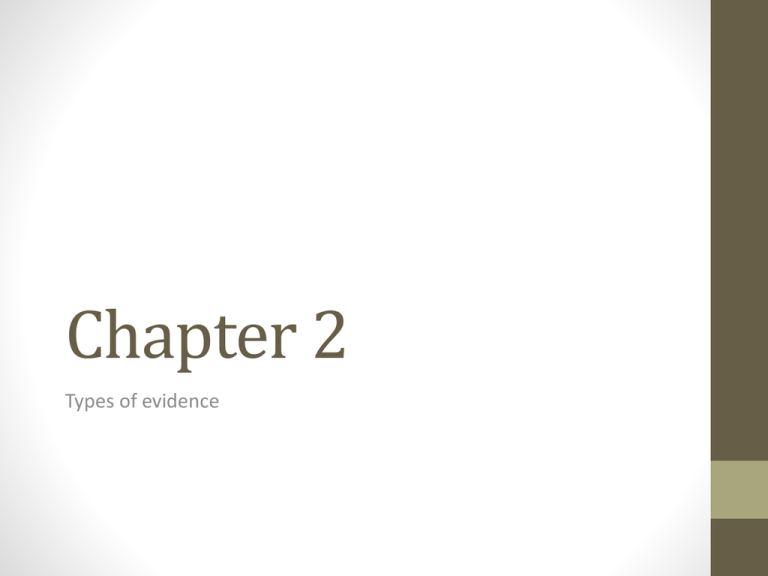
Chapter 2 Types of evidence Learning objectives • Explain the difference between indirect and direct evidence. • Describe what is meant by physical evidence and give examples. • Distinguish individual evidence from class evidence. • Determine the significance of class evidence. So what is evidence? • Something that tends to establish or disprove a fact. • Can include documents, testimony, or other objects. Classification of Evidence • Testimonial evidence is a statement made under oath; also known as direct evidence or prima facie evidence. • Physical evidence is any object or material that is relevant in a crime; also known as indirect evidence. Examples are hair, fiber, fingerprints, documents, blood, soil, drugs, toolmarks, impressions, glass. Reliability of Eyewitness Factors that affect accuracy: • Nature of the offense and the situation in which the crime is observed • Characteristics of the witness • Manner in which the information is retrieved Eyewitness • A police composite may be developed from the witness testimony by a computer program or forensic artist. • Faces 4.0 facial software recognition The value of physical evidence • • • • • • Is generally more reliable than testimonial evidence Can prove that a crime has been committed Can corroborate or refute testimony Can link a suspect with a victim or with a crime scene Can establish the identity of persons associated with a crime Can allow reconstruction of events of a crime Types of Physical Evidence • Transient evidence is temporary- such as an tire tracks, footprints, or odor. • Pattern evidence is produced by direct contact between a person and an object or between two objects- such as gun powder or blood spatter. • Conditional evidence is produced by a specific event or action; important in crime scene reconstruction and in determining the set of circumstances or sequence within a particular event- such as body position or type of wounds. Types of Physical Evidence • Transfer evidence is produced by contact between person(s) and object(s), or between person(s) and person(s). • Associative evidence is something that may associate a victim or suspect with a scene or with each other; e.g., personal belongings. • Remember - evidence can be biological, chemical, physical or miscellaneous. Significance of individual vs. class evidence • Individual evidence is linked to a unique, single, specific source – fingerprints, handwriting, DNA… • Class evidence is evidence that can be linked to a group of similar objects, but not a single object – clothes, car, blood type The seven major categories of forensic investigation 1. 2. 3. 4. 5. 6. 7. Recognition of important evidence Preservation of evidence Identification using scientific testing Comparison of class characteristics Individualization of evidence Interpretation Reconstruction of the events Key Vocabulary terms • • • • • • • • Evidence Testimonial evidence Physical evidence Indirect evidence Circumstantial evidence Control sample Individual evidence Class evidence




